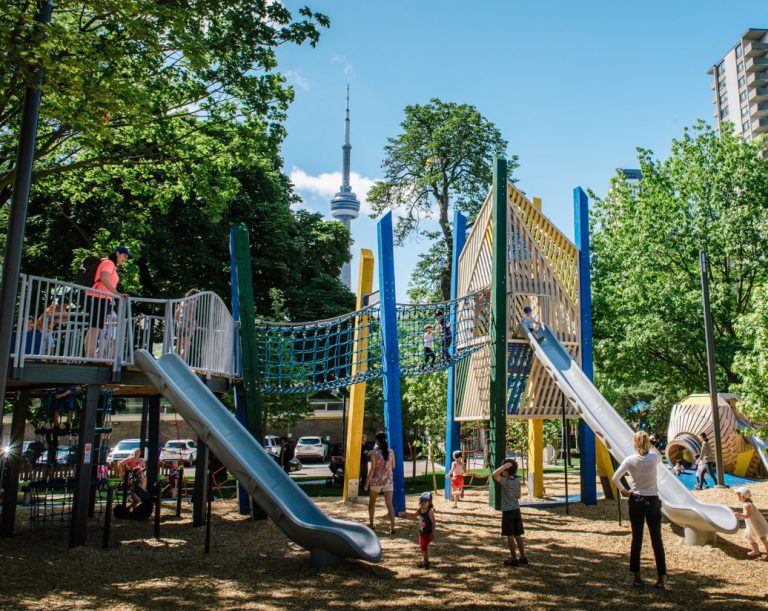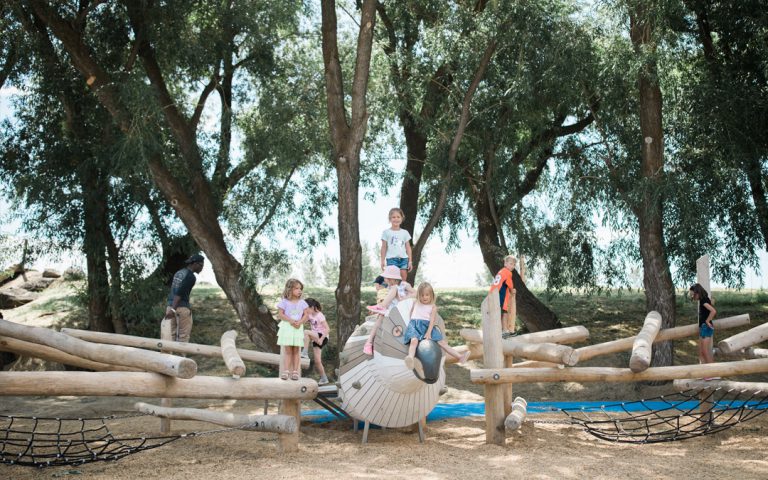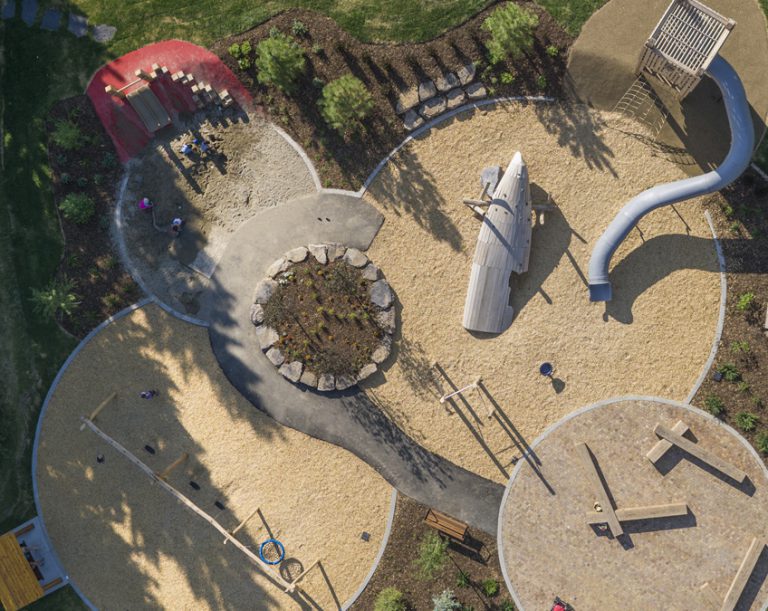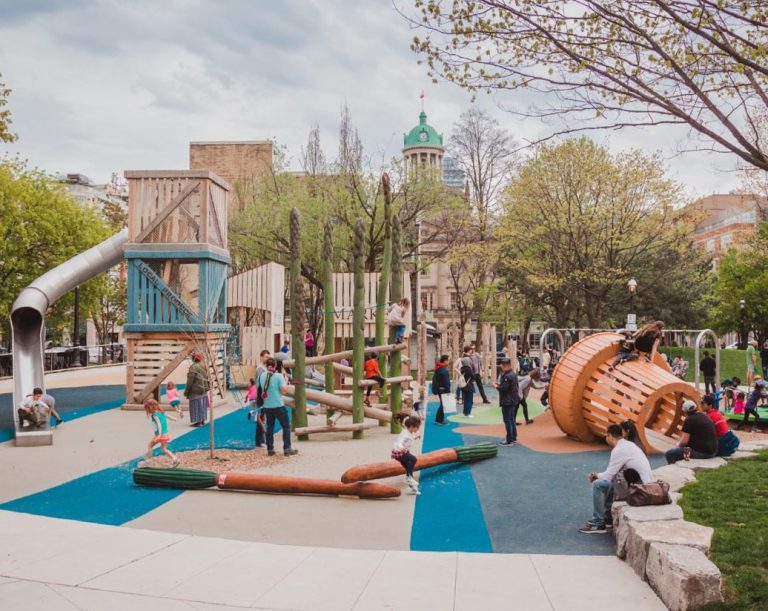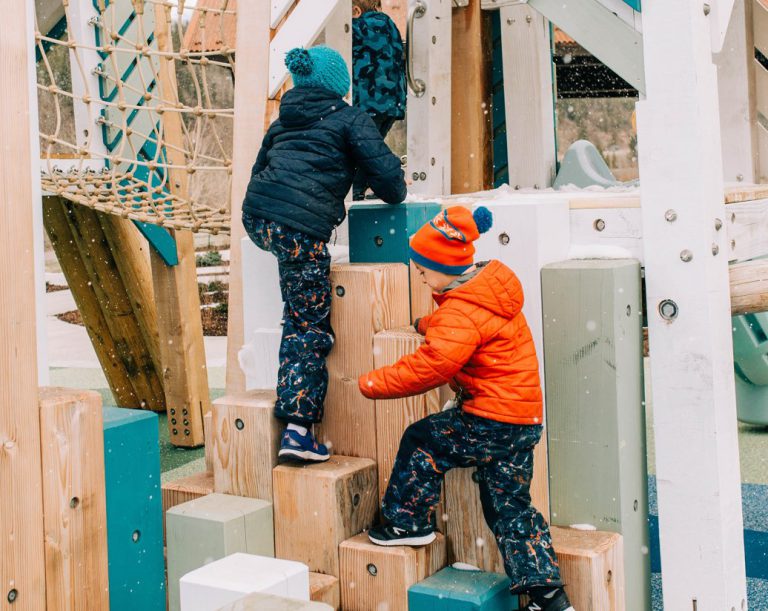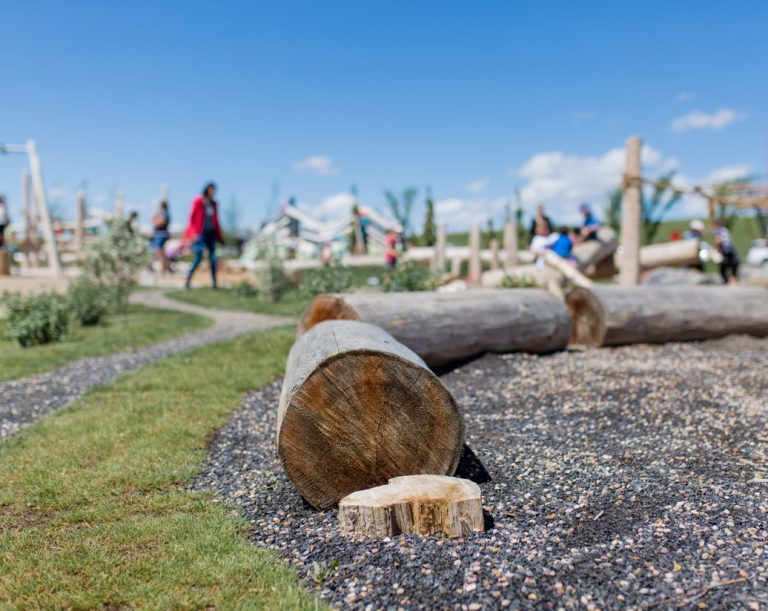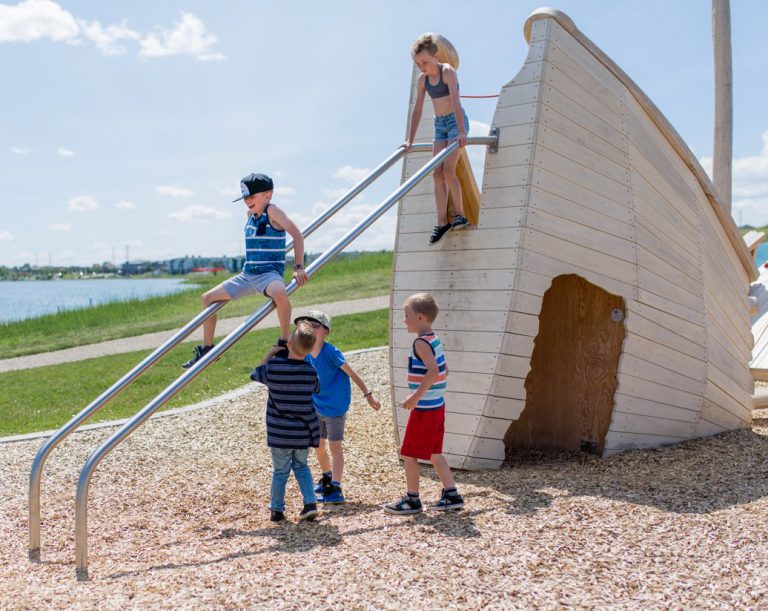Our Philosophy
of Play[grounds]
Playgrounds are places where children thrive; where imaginations run wild; where bodies and brains are engaged. They are places of stimulation, socialization, excitement, joy and wonder. They are spaces that build community.
Our approach to playground design recognizes that every child plays and interacts with the world in a unique way. Some children are adventurous climbers while others are exploratory diggers; some are constant risk-seekers while others like to quietly observe. At different developmental stages, even on different days, children have different needs and interests.
At the start of every playground design, key questions are: what opportunities can be offered here? What do children want from this play space? How can we create an awe-inspiring destination where children and families will want to return over, and over again? Our aim is to engage and delight each child, offering the highest play value possible. With each project, we listen to, learn from, and observe the children for whom we create.
Five primary considerations are given to each of our playground projects:
Site Design
Effective playground designs functionally maximize use of the complete site. Forming meaningful, organic relationships between playground structures and their living, breathing surroundings adds a crucial element to the play experience.
- Playgrounds optimally blur boundaries between play space and park space; the playground should seamlessly blend into the site.
- Play structures are situated and functionally linked in an interesting and comprehensive way; use connective pathways and changes in topography, a variety of surface materials and incorporate trees, shrubs, seating and shade.
Site Context & History
A custom playground presents a unique opportunity to create or enhance a strong sense of place. References to site history and context can be subtle or overt, general or detailed, literal or abstract. Themed pieces can weave a story that speaks to the distinct history, ecology, or culture of a place.
- Use common colours, materials and motifs that aesthetically connect the playscape to its immediate surroundings.
- Unique shapes or references that reflect a community’s history or story create a sense of belonging and ownership.
- Examples of how playgrounds reflect their site or community are St. James Park, Story Mill Park, Wanuskewin Heritage Park, and Sugar Beet Park.
Open-Ended Play & Risk
For children to develop mobility, strength, balance and coordination, they need opportunities that enable free movement. These are undefined and open-ended play opportunities where they can climb, swing, hop, balance and learn to assess their own abilities and trust their own judgement.
- When children feel challenged and experience both failure and success, they gain confidence in their own decision-making skills. Opportunities to take calculated risks are critical for children’s physical development and mental well-being.
- Excessively standardized equipment designed to prioritize safety and minimize complexity does little to advance child development. Including elements of unpredictability and variation affords the opportunity for children to learn critical skills of movement in an irregular environment.
- Playgrounds should offer adventure and self-discovery and integrate graduated challenge levels so children with different capabilities can play together.
Nature Connections
With more people living in urban environments, many of today’s children are missing out on the beauty and joy of a connection to the natural world. The experience of nature has so many documented life-long benefits: improved physical and mental health, educational opportunities, community connections and environmental awareness. We design sustainable playgrounds using natural materials that offer a stronger environmental connection.
- Our primary building material of choice, wood, is a flexible, natural and renewable resource.
- Organic elements, like water, sand, rocks and dirt, can be creatively manipulated so children learn cause and effect.
- Natural materials offer a multi-sensory play experience by enriching the imagination and stimulating curiosity.
Inclusive & Social Play
Playgrounds are the most fun when they are enjoyed with friends and family. They are community gathering spaces where new friendships begin and flourish and old friendships are renewed. Sand pits, water pumps, balancing logs, and climbers nurture cooperative and social play where children interact, encourage and teach each other.
- To be truly inclusive, playgrounds must enable and empower kids of all abilities and ages to connect. It involves more than just access routes or surface materials to afford opportunities for all children to be challenged and stimulated.
- Playground designs must include spaces where children can play with others as well as places where children can find solitude to ponder and observe.
- For some children, particularly those with special needs, thoughtfully designed zones for passive play are a welcome or necessary place of calm and separation.
- Nooks, berms, huts, seating, and shaded spaces give children and adults a place to retreat from busy play and provide a perfect vantage point for a caregiver.

